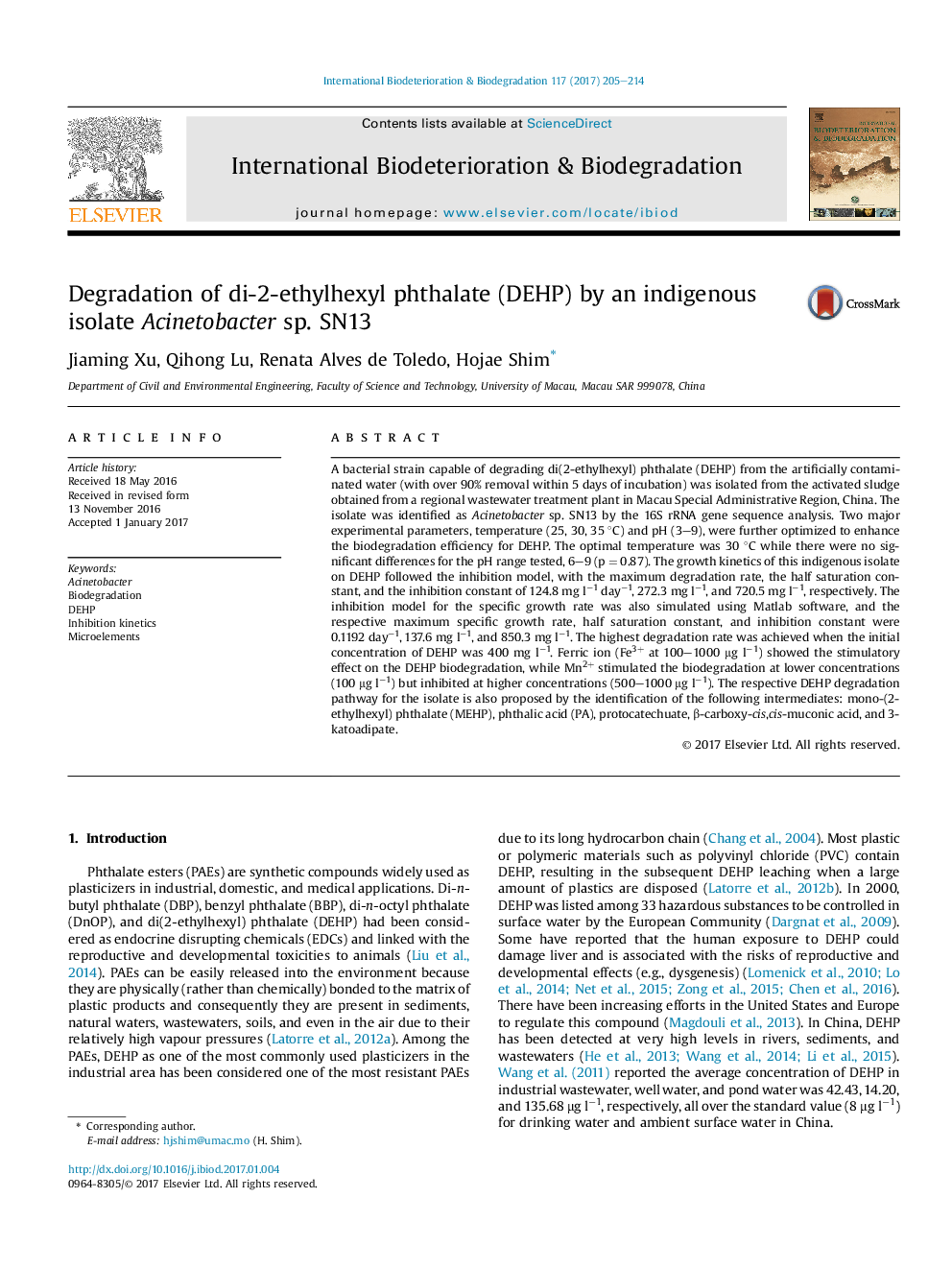| Article ID | Journal | Published Year | Pages | File Type |
|---|---|---|---|---|
| 5740518 | International Biodeterioration & Biodegradation | 2017 | 10 Pages |
Abstract
A bacterial strain capable of degrading di(2-ethylhexyl) phthalate (DEHP) from the artificially contaminated water (with over 90% removal within 5 days of incubation) was isolated from the activated sludge obtained from a regional wastewater treatment plant in Macau Special Administrative Region, China. The isolate was identified as Acinetobacter sp. SN13 by the 16S rRNA gene sequence analysis. Two major experimental parameters, temperature (25, 30, 35 °C) and pH (3-9), were further optimized to enhance the biodegradation efficiency for DEHP. The optimal temperature was 30 °C while there were no significant differences for the pH range tested, 6-9 (p = 0.87). The growth kinetics of this indigenous isolate on DEHP followed the inhibition model, with the maximum degradation rate, the half saturation constant, and the inhibition constant of 124.8 mg lâ1 dayâ1, 272.3 mg lâ1, and 720.5 mg lâ1, respectively. The inhibition model for the specific growth rate was also simulated using Matlab software, and the respective maximum specific growth rate, half saturation constant, and inhibition constant were 0.1192 dayâ1, 137.6 mg lâ1, and 850.3 mg lâ1. The highest degradation rate was achieved when the initial concentration of DEHP was 400 mg lâ1. Ferric ion (Fe3+ at 100-1000 μg lâ1) showed the stimulatory effect on the DEHP biodegradation, while Mn2+ stimulated the biodegradation at lower concentrations (100 μg lâ1) but inhibited at higher concentrations (500-1000 μg lâ1). The respective DEHP degradation pathway for the isolate is also proposed by the identification of the following intermediates: mono-(2-ethylhexyl) phthalate (MEHP), phthalic acid (PA), protocatechuate, β-carboxy-cis,cis-muconic acid, and 3-katoadipate.
Related Topics
Life Sciences
Environmental Science
Environmental Science (General)
Authors
Jiaming Xu, Qihong Lu, Renata Alves de Toledo, Hojae Shim,
